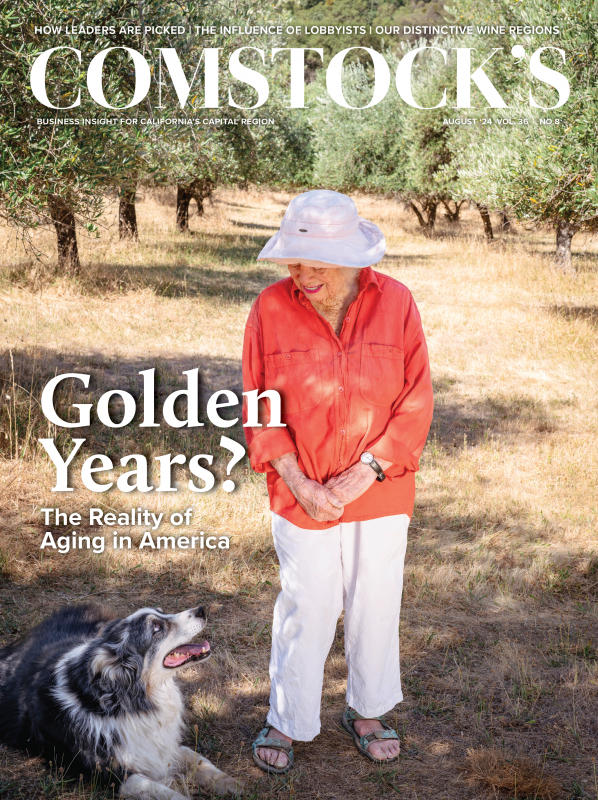With this summer being especially intense from a 24-hour news-cycle standpoint — from people trying to sabotage French trains heading to the Olympics to an assassination attempt, from a U.S. president abandoning his campaign for reelection to intentional wildfires — I wanted to tone things down a bit for this month’s letter. So I’m turning my attention to a less volatile but still important subject: trade associations.
If your business or nonprofit isn’t active in or even just a member of a trade association, you should be experiencing what young people call the FOMO syndrome — the fear of missing out. At last count, there were roughly 560 trade associations in our region. In fact, Sacramento is among the 10 largest home bases for associations in the country. We’re even part of an association for associations — and with more than 1,400 members, the California Society of Association Executives — or CalSAE — is the second largest local group in the United States for those professionals.
Some form of professional associations has been around since the early 1800s (in France), and long before that there were medieval guilds in which young people apprenticed to learn their trade with on-the-job training. People who aren’t in an association may not know what they’re missing. They may perceive that all an association does is lobby elected officials to ease up on outmoded regulations or to buck up the minimum wage (or tamp them down).
But associations are far more than what anti-lobbyist groups call the “fourth estate,” which traditionally was the news media and means they have as much sway over government as the other three “estates” — the executive, legislative and judicial branches. They provide their members with educational and employment advancement opportunities, group-discounted medical and dental coverage, and the one thing you can’t easily quantify but know it when you feel it: camaraderie.
Associations also create jobs in every state you find them (which is darned near every state). They boost their region’s economies through their members’ attendance at conventions and all of the ancillary spending that comes from that through the purchase of services such as dining, gas, dry cleaning and going to tourist attractions. Associations bring in $95 million to Sacramento’s economy alone each year.
Maybe you’re wondering why our area can boast of so many trade associations. The logical answer is, well, we are the Capital Region (a brand this magazine coined some years ago which really caught fire!). But if that’s the entire reason, why aren’t Albany, Boise, Des Moines and Topeka — the capitals of New York, Idaho, Iowa and Kansas — teeming with associations? They all have them, of course.
But Sacramento also has easy access to academic institutions like UC Davis, Sacramento State, University of the Pacific and fine community colleges. This means associations can call on nearby experts to lecture on or simply discuss the issues facing every imaginable endeavor in the state — as well as wider issues such as understanding the marketplace, economy, medicine, climate change, the law and the arts. It’s not unusual for a convention to feature panels consisting of professors, inventors, painters and movie stars who are just a short drive or flight away.
In addition, trade associations may give companies and nonprofits a sense of what others in their field are up to and ideas on how to cope with issues of foreign competition, technological innovations, obsolescence, matters of human relations and cultural disconnects. Members can find out how their colleagues handled (or are handling) surprise personnel changes, supply chain matters and the all-important issue of succession planning.
On the internet, it’s said that content is king, meaning the more
information you have or can dispense, the stronger your market
position will be. The same holds true for businesses and
nonprofits. They need to be informed. If an association is known
for being current, it’ll have a far easier time recruiting and
retaining members. For example, just this month the Builders
Exchange of San Joaquin is offering its members seminars on
“Prevailing Wage Common Mistakes” and a mid-year HR Update. While
these are contemporary concerns, it’s worth noting that as of
this year, BXSJ has been around for a century (see our special
section in this issue, starting page 60).
Then there’s the Sacramento Board of REALTORS, now in its (gasp!)
116th year, 8,000 members strong and holding a big fundraiser
this month to raise funds for its SAR Scholarship Foundation.
How? By hosting a comedy night (“Laughs and Leis”). Did I mention
that associations are also fun to be a part of?
The best associations are also the best corporate neighbors. They encourage their members to hire local and to support local causes. Sometimes this can be a nonprofit they “adopt,” but more often it’s how, through the spin-off foundations they form, they provide scholarships and financial-assistance programs to the communities in which they’re based.
“A trade association may help establish industry standards that protect the public or allow components from different manufacturers to operate together,” says the website of the Associated Equipment Distributors, as succinct a reason for joining or re-upping your association membership as I can think of. And it sure beats coming down with a bad case of FOMO.
Winnie Comstock-Carlson
President and Publisher
–
Stay up to date on business in the Capital Region: Subscribe to the Comstock’s newsletter today.
Recommended For You

The Marvel of Milestones
Comstock’s President and Publisher Winnie Comstock-Carlson reflects on 35 years since launching the iconic Capital Region magazine.

Some Important Bedfellows: Financial Literacy, Art, Reading and Writing
Comstock’s President and Publisher Winnie Comstock-Carlson examines the shortcomings of California’s public school system.

We’re Hitting One Into the Ballpark!
Comstock’s President and Publisher Winnie Comstock-Carlson shares her thoughts on the A’s move to Sacramento.

Musings on Happiness, Leadership and the Promises of Spring
Comstock’s President and Publisher Winnie Comstock-Carlson muses on collective happiness and hopes for renewed vibrancy in spring.

From Steno Pads to C-Suites: We’ve Come a Long Way
In light of our Women in Leadership issue, Comstock’s President and Publisher Winnie Comstock-Carlson reflects on how far we’ve come.

Is Education’s Future Safe — or Artificial?
Comstock’s president and publisher Winnie Comstock-Carlson weighs in on the future of education with AI.





